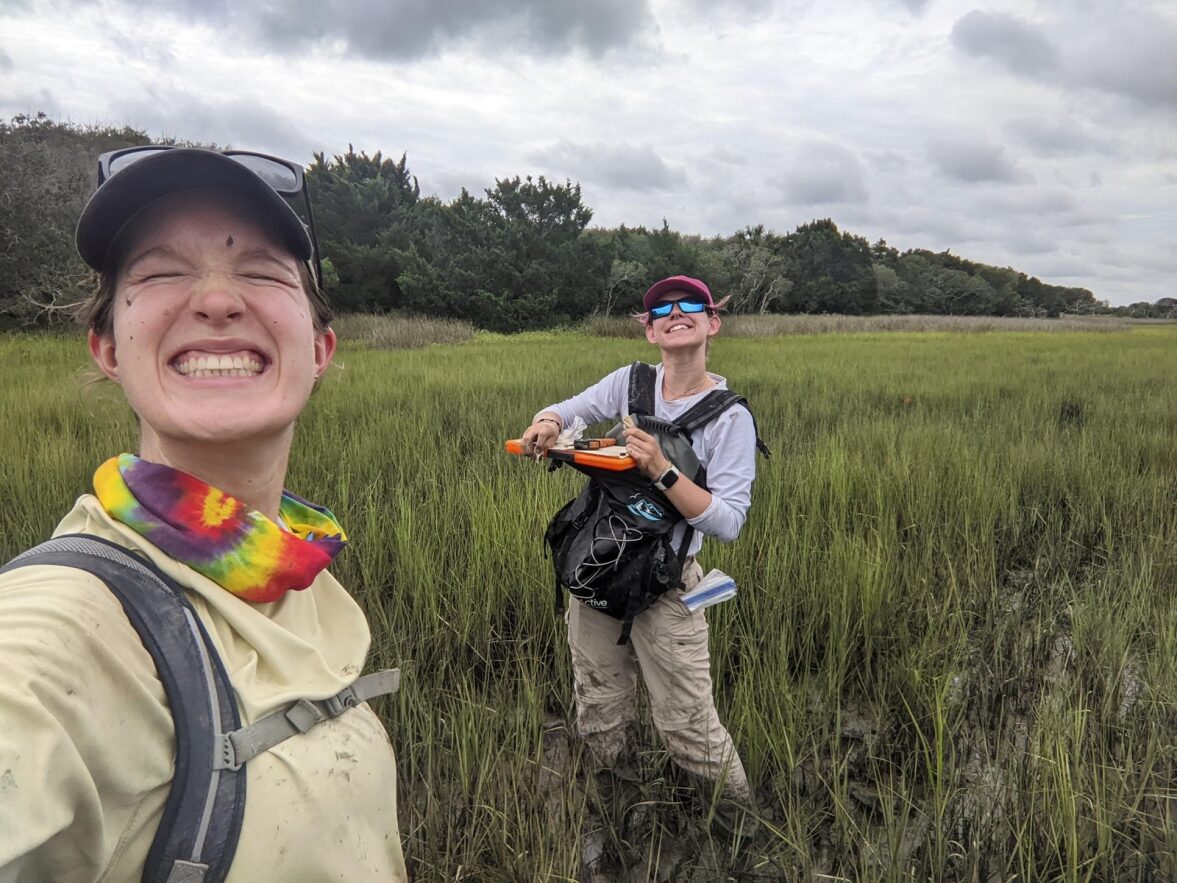After graduating with a degree in political science and working for two and a half years in nonprofits, Emory Wellman was unsure whether a career shift to the natural sciences would pay off, but she knew she would regret it if she didn’t try. These days, Emory is a full-time graduate student studying ecology, and enjoys spending her time outside on Florida’s coast, appreciating the beauty of her new workplace.

“Cedar Key is a really special place,” said Wellman. “Every time I go, I have to sit there just for a second and take it in.”
Though new to the field of ecology, Wellman’s talent, hard work and character is garnering praise among her colleagues.
“Emory Wellman exemplifies an exceptional and determined coastal ecosystem scientist,” said Anna Braswell, Ph.D., assistant professor in the School of Forest, Fisheries and Geomatics Sciences and Wellman’s Ph.D. advisor. “Her remarkable self-motivation shines through as she tirelessly contributes to any team she joins.”
As a third year Ph.D. student in the School of Forest, Fisheries and Geomatics Sciences (SFFGS), Wellman investigates ecological stability and factors that determine ecosystem structure. She’s currently working on three research projects, the first of which involves looking into how co-occurring nutrient enrichment from agricultural or urban runoff and the presence of mussels impact a St. Augustine marsh.
Wellman also studies wave energy as a potential driver of oyster habitat loss in the Big Bend region. Waves can remove clumps of oysters from vulnerable oyster reefs, which can be damaged or broken apart by the waves as they are moved around.
This work fills a gap in the research on wave energy as a driver of oyster habitat loss, which exists in part due to the high cost of instruments used to measure wave energy. An industrious person, Wellman builds her own homemade wave gauges, which cost about 300 dollars apiece compared to the ‘store bought’ wave sensors that run about 3,500 dollars each, to explore the connection between oyster habitat structure and the average wave energy they experience. She deploys these sensors at sites in Cedar Key across a range of oyster abundance and wave exposures, from areas that receive the full force of waves to more inland locations.

Back in the lab, Wellman collaborates with Bret Webb, Ph.D., professor in the Civil, Coastal and Environmental Engineering Department at the University of South Alabama, to use a wave flume, a tank in which researchers can control the level of wave energy to which the clumps are exposed, to study the effect of wave energy on moving oyster clumps and the role clump size may play in the distance they travel. Early findings suggest that smaller clumps and clumps which are exposed to higher levels of wave energy are more mobile, and therefore more vulnerable to fragmentation or loss. Factors which cause clump mobility and fragmentation, like storms or harvesting, may therefore contribute to reef decline.
Understanding the challenges that oysters face calls for collaboration across disciplines, which Wellman says is a hallmark of CCS.
“In the spirit of CCS, the main thing I want to emphasize is that I rely on such a diverse network of people to help me,” said Wellman. “True collaboration has been the best thing about UF so far. The people you need might not be in your department, but once you find them, they want to help you.”